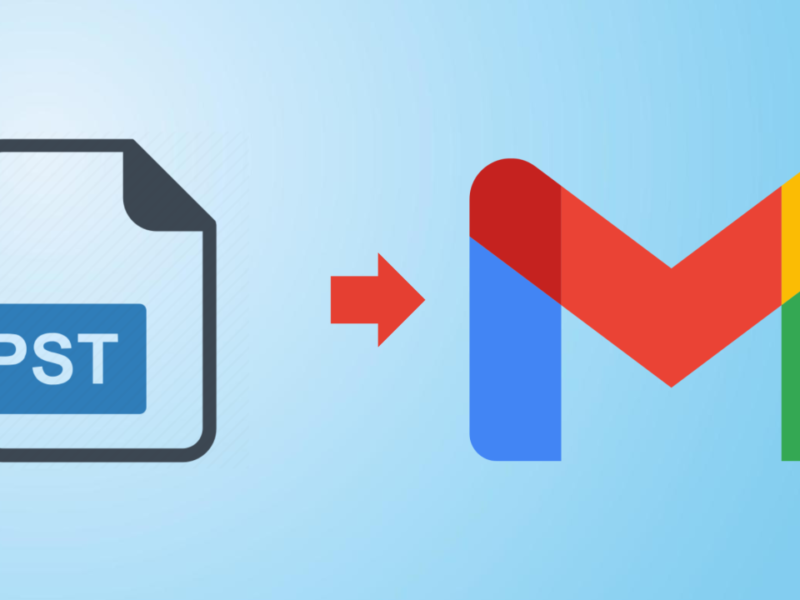MSG files, commonly known as Outlook messages, are proprietary file formats used by Microsoft Outlook to store emails, attachments, and other Outlook-related data. While you can typically open MSG file using Microsoft Outlook or other email clients, there are situations where you may want to view MSG files directly in your web browser. In this blog post, we will explore different methods to open MSG files in your browser, offering you greater convenience and accessibility.

How to Open MSG Files in a Browser: Methods and Mechanism
Method 1: Using Online MSG File Viewers Online MSG file viewers provide a simple and efficient way to open MSG files in your browser without any additional software. Choose a reliable online MSG file viewer and browse your computer or drag and drop the MSG file into the designated area.
After the upload is complete, the online viewer will open all the MSG files on its interface, where you can view its entire content. That will show you the complete data associated with the MSG file, including the attachments and their preview.
These tools are very useful for viewing the MSG file data to scrutinize the details and perform quick, specific searches to filter the content. However, when you have to share the emails or use them as attachments, it is not possible with the MSG file viewers.
Method 2: Converting MSG Files to EML Format: Another way to open MSG files in your browser is by converting them to the EML (Email Message) format. EML files are widely supported; by various email clients and web-based email services. Follow these steps to convert MSG files to EML format:
- Launch Microsoft Outlook or any email client that supports MSG files.
- Open the MSG file you want to view.
- Once the MSG file is open, click on “File” and select the “Save As” or “Save Message As” option.
- In the Save As dialog box, choose a location on your computer where you want to save the file.
- From the “Save as type” dropdown menu, select the EML format.
- Click “Save” to convert and save the MSG file as an EML file.
Once the file is saved; locate it on your computer and double-click to open it. It should open in your default web browser or any application associated with EML files.
Method 3: Convert MSG to HTML
That is one of the most accurate and fail-proof ways to open MSG files in any browser. However, doing this manually; is nearly not possible. To convert MSG files to HTML format, you can use Magus MSG to HTML converter. It is a reliable and easy-to-use software to export multiple MSG files into HTML. That can be done by using these steps:
- Download, install, and launch the Magus MSG File Converter
- Click on the “Add Files” or “Add Folder” button to import the MSG files you want to convert. You can select individual files or entire folders containing multiple MSG files.
- Once the MSG files are added, you can preview their content within the software.
- Select the MSG files you want to convert to HTML format. You can hold the Ctrl key to select multiple files.
- Choose the output format as “HTML” from the available options.
- Specify the destination folder where you want to save the converted HTML files.
- Optionally, you can customize the conversion settings, such as including attachments or converting email properties.
- After selecting the desired settings, click the “Convert” or “Start” button to initiate the conversion process.
- Magus MSG Converter will process the selected MSG files; and convert them to HTML format. The conversion progress will appear on the screen.
- Once the conversion is complete, you can navigate to the specified destination folder to access the converted HTML files.
- Open the converted HTML files in your preferred web browser to view the content of the original MSG files.
Magus MSG Converter provides a straightforward way to convert MSG files to HTML format, ensuring that; you can conveniently view the email content in any web browser without using Microsoft Outlook or other email clients.
When and Why You Open MSG File in a Browser
Opening MSG files in a browser like Chrome, Firefox, Edge etc. can offer several benefits and advantages. Here are some reasons why you might choose to open MSG files in a browser:
Accessibility: By opening MSG files in a browser, you can access and view the content from any device with a web browser. That eliminates the need for specific software or email clients, making it easier to access the information on different platforms, such as desktop computers, laptops, tablets, or smartphones.
Convenience: Browsers are for various tasks, and having the ability to open MSG files directly in a browser eliminates the need to switch between different applications. You can seamlessly view your email content alongside other web-based activities, enhancing productivity and saving time.
Compatibility: Not all users have the access to Microsoft Outlook or other email clients; that support MSG files. By opening MSG files in a browser, you can ensure compatibility across different systems and software environments. Browsers are typically standardized and widely supported, allowing a broader range of users to access and interact with MSG file content.
Sharing and Collaboration: When sharing MSG files with others, opening them in a browser simplifies the process. Instead of requiring recipients to have specific software installed; they can use their web browser to view the content. That makes it easier to collaborate on email-related tasks, share information and discuss email content with colleagues, clients, or partners.
Enhanced Security: Browsers often come with built-in security features and updates, providing a secure environment for opening and viewing files. That can be particularly beneficial when dealing with potentially malicious or suspicious MSG files. Browsers can help protect your system from any potential threats, ensuring a safer browsing experience.
Search and Indexing: Browsers often offer search functionalities, allowing you to search for specific keywords, phrases, or attachments within the MSG file content. That can be useful to locate any specific information; quickly within a large email or attachment.
Archiving and Storage: Opening MSG files in a browser allows you to save them in other formats, such as HTML or PDF. These formats are easily searchable, portable, and can be stored in a structured manner. That makes it simpler to archive MSG files, or keep them for future reference without relying on specific email client software.
Conclusion:
Opening MSG files in a browser provides greater accessibility, compatibility, and convenience, allowing you to access, share, and collaborate on email content more efficiently. It simplifies viewing MSG files across different devices and platforms, enhancing productivity and facilitating seamless communication.

